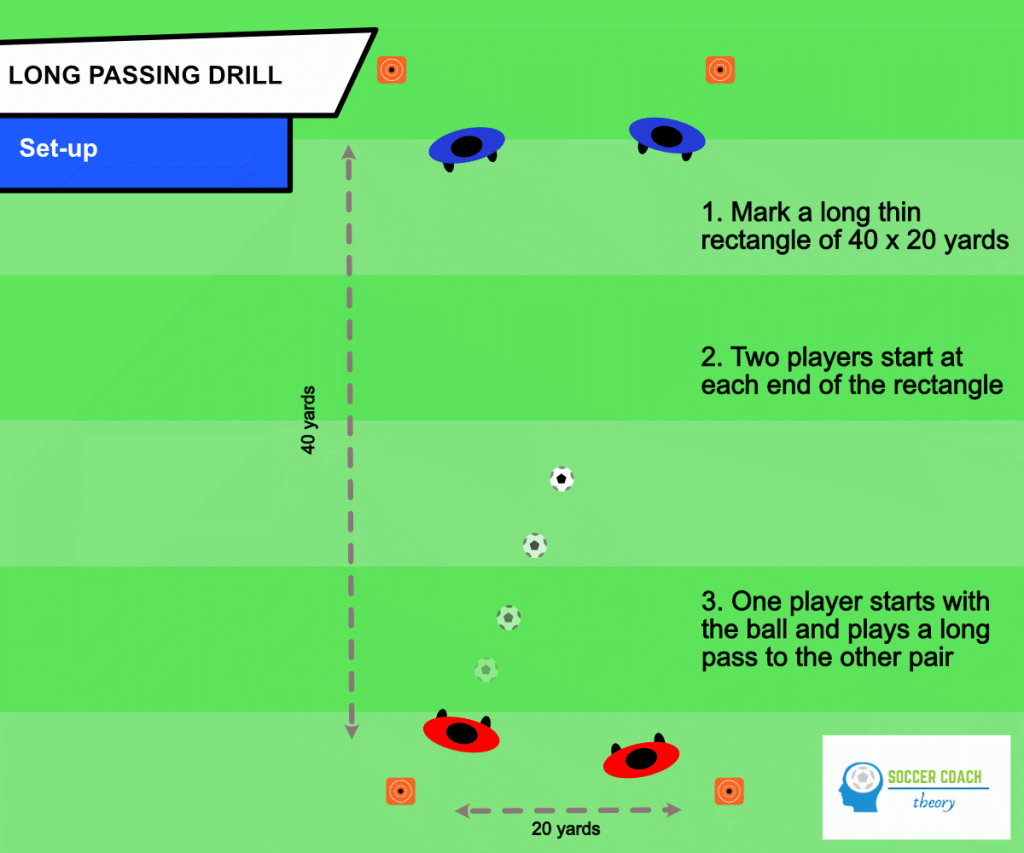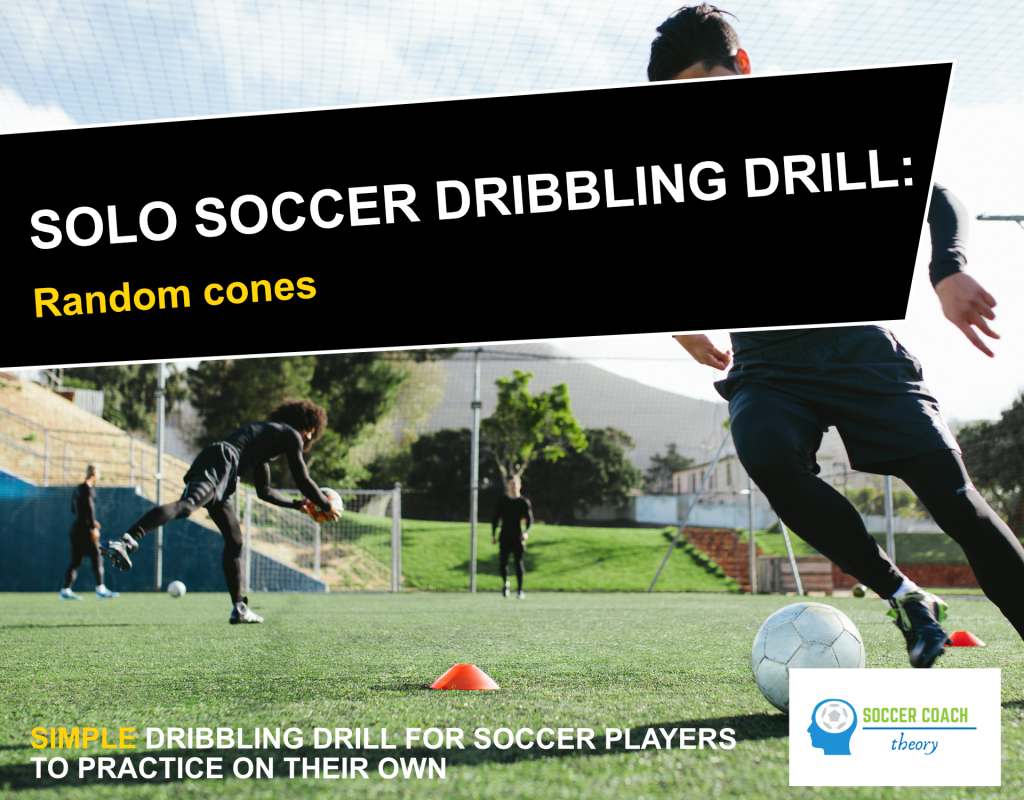Soccer Long Passing Drill – Soccer Coach Theory
I love a good simple passing drill. This long passing drill is perfect for younger players. However, I’ve also used this as a part of a warm-up for semi-pro sides before. It’s a great way to work on long passing and controlling a long ball too.
You never get too old for the basics.
What You’ll Need for a Long Passing Drill
- 4 cones
- 1 soccer ball
- Approx. 40 yards of space
Long Passing Drill Set-Up:
- Mark out a long thin rectangle, approximately 40 yards long x 10 yards wide (distance can be altered depending on age range)
- Two players start at one end of the rectangle
- Another two players start at the opposite end
- One pair starts with the ball

Long Passing Drill Execution:
- One player plays a long pass towards the other pair
- One of the ‘receiving’ pair controls the ball while laying it off to their partner
- Their partner in turn, lays it back to them
- The ‘receiving player’ can then play a long pass to the opposite pair, ideally first time
- The same happens at the other end
- The drill continuously repeats with the pairs switching roles so they each get lots of goes at playing the long pass

Coaching Tips
- Encourage good striking technique to ensure the accuracy of the pass
- Receiving players should be on their toes, ready to move to receive the pass if necessary
- Focus on the quality of touch of the receiving player
- Emphasize the quality of the lay off to the player making the pass
Progressions
- Limit all players to one touch
- Increase the passing distance between the two groups

Variations
- Focus on low-driven passes with the laces
- Focus on high-lofted passes
- Focus on curled passes with the instep
- Add a defender at either side. This defender becomes active once the receiving player has taken their first touch. The receiving pair must then play keep the ball between themselves to keep the ball away from the defender and work the space to play a long pass back to the opposite pair




![Soccer Attacking Combinations and Finishing Drill [+ Diagrams]](https://soccercoachtheory.com/wp-content/uploads/2022/12/Soccer-Attacking-Combinations-and-finishing-drill.png)



